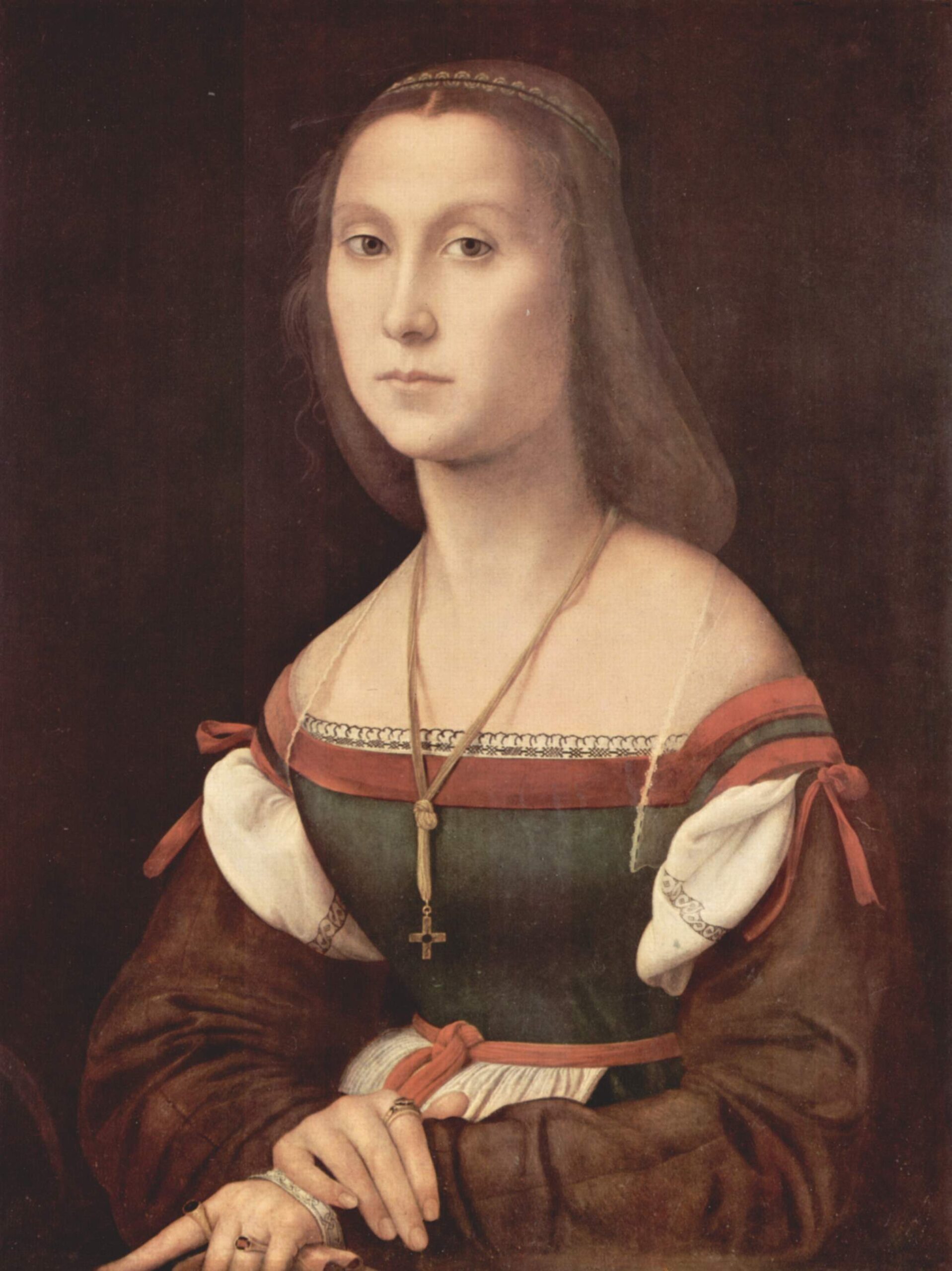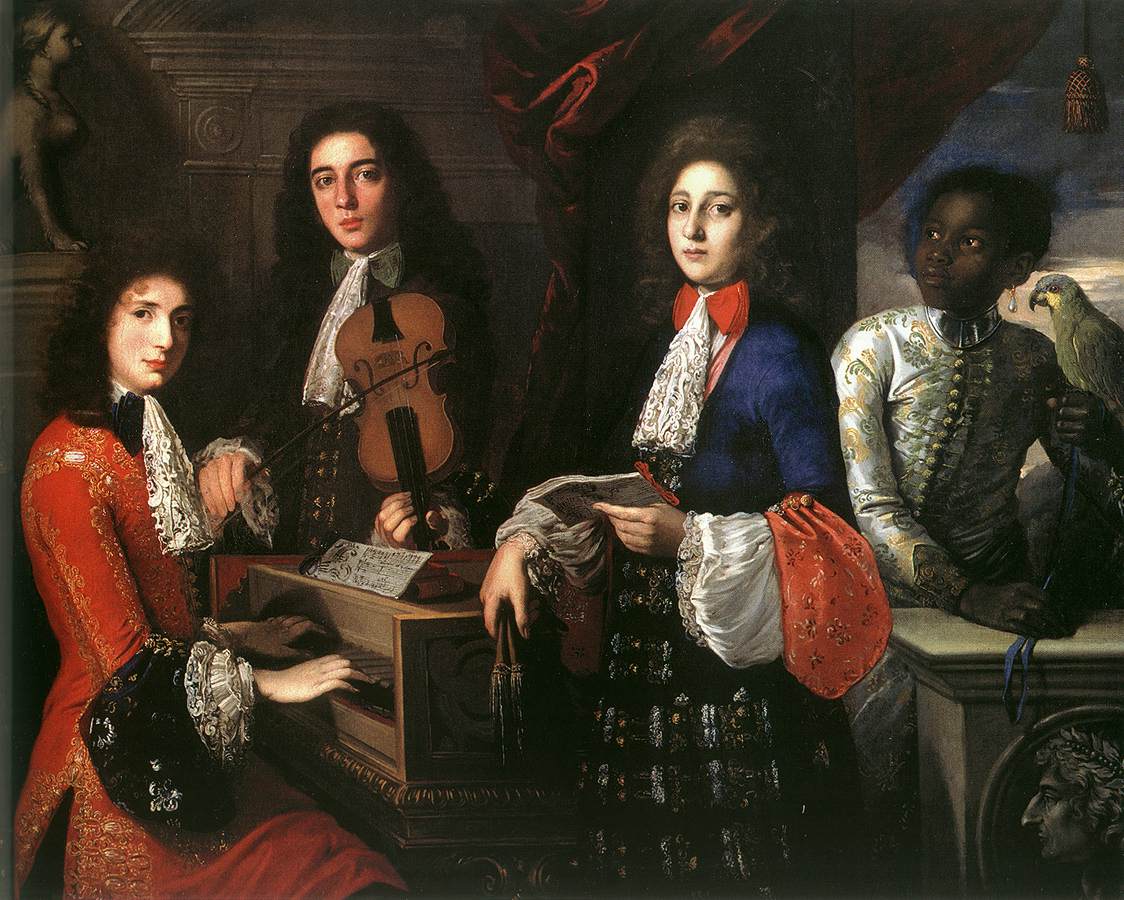Ferdinando de’ Medici was born 9 August 1663. Born into the title of “The Grand Prince of Tuscany,” Ferdinando was the son of Cosimo III and his Grand Duchess Marguerite Louise d’Orleans. Ferdinando was perhaps best known for his patronage of the arts. It is believed, for example, that his funding of instrument maker Bartolomeo Cristofori proved crucial for the development odor Cristofori’s eventual invention of the piano. In addition to commissioning artists, such as Anton Domenico Gabbiani, for novel works, Ferdinando also developed an impressive collection of art in his primary residence, the Medici villa at Poggio a Caiano. Purportedly included in this collection were works by artists like Andrea del Sarto and Raphael, including Raphael’s Portrait of a Young Woman (La Muta).
Niccolò Cassani, Portrait of Ferdinando de’ Medici, Grand Prince of Tuscany, 1687; Vasari Corridor, Uffizi Gallery, Florence.
Raphael, Portrait of a Young Woman (La Muta), 1507; Galleria Nazionale delle Marche, Urbino.
Anton Domenico Gabbiani, Three Musicians of the Medici Court, c. 1687, Galleria dell’Accademia, Florence.
Giovanni Battista Foggini, Ferdinando de’ Medici, c. 1685. National Gallery of Art, Washington, D.C.



